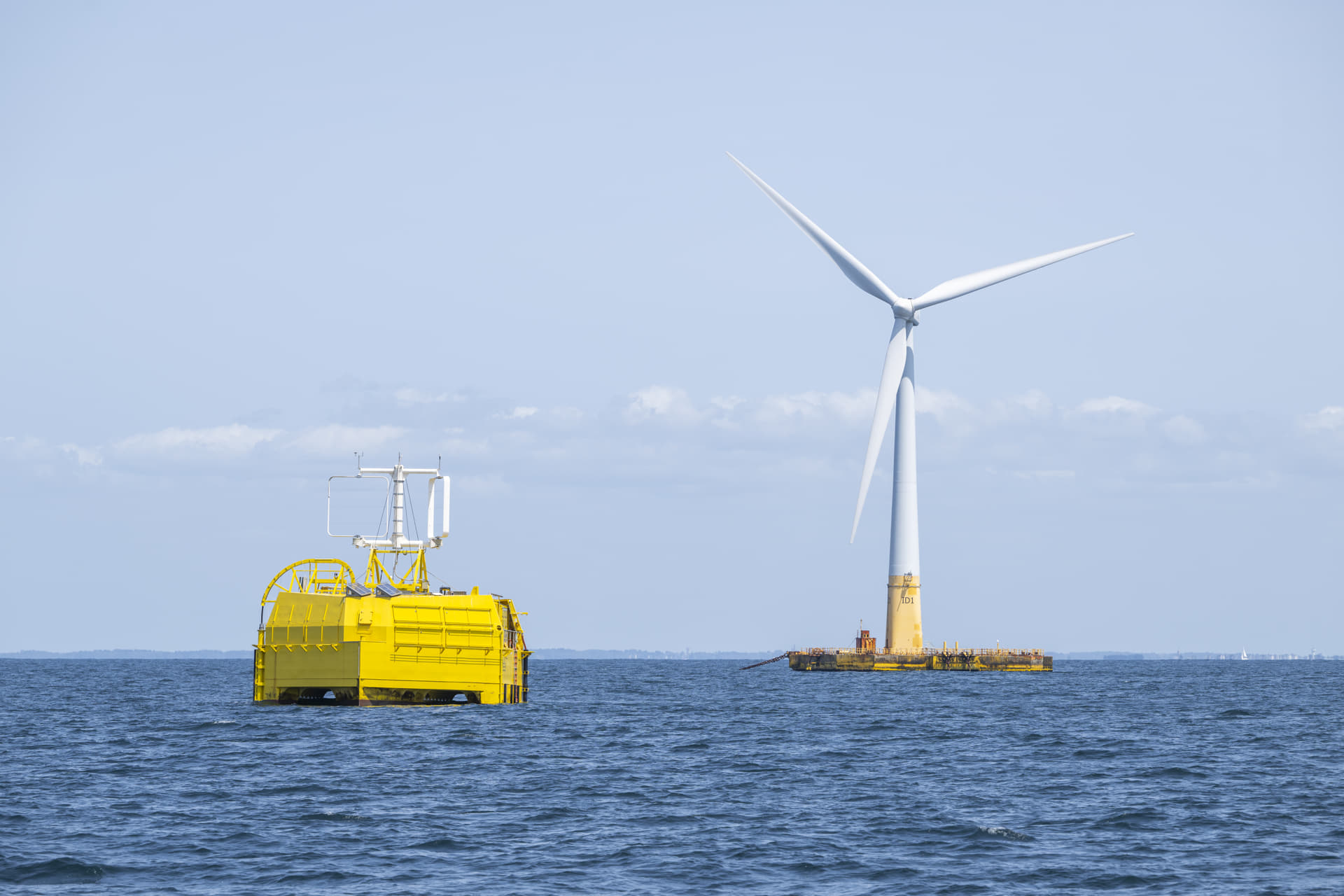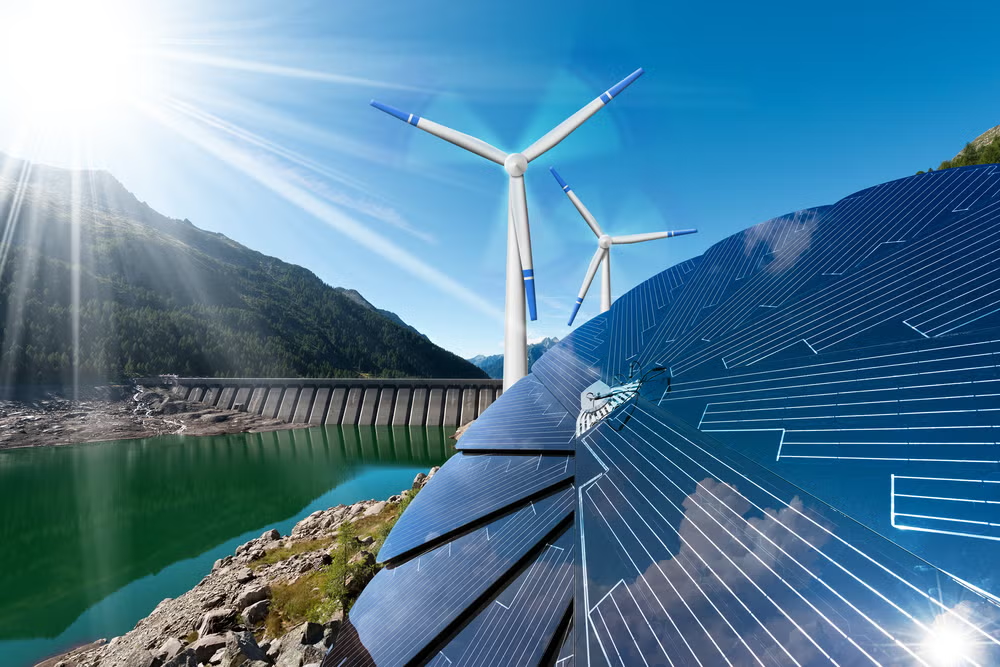The global energy landscape is undergoing a seismic shift, fueled by a growing sense of urgency to tackle climate change and reduce dependence on fossil fuels. Renewable energy sources, such as wind, solar, and hydropower, have already made significant inroads into global energy markets. However, the quest for an energy revolution is far from over. We stand at the precipice of what could be a true breakthrough in renewable energy—one that promises to reshape how we produce, store, and consume power.
In this article, we’ll explore the key technologies, scientific advancements, and global trends that signal we may soon witness a renewable energy revolution. From groundbreaking energy storage solutions to the potential of hydrogen fuel cells, we will examine what’s next for the renewable energy sector and why this could be the turning point we’ve all been waiting for.
The Current State of Renewable Energy: Achievements and Limitations
The rise of renewable energy is undeniable. According to the International Renewable Energy Agency (IRENA), global renewable energy capacity has more than doubled in the past decade. In 2020 alone, renewable power accounted for over 29% of global electricity generation. Wind and solar power are now the fastest-growing energy sources, driven by declining costs and technological advancements.
However, despite this progress, there remain significant challenges. For instance, solar and wind power are intermittent—they only generate electricity when the sun is shining or the wind is blowing. This makes the integration of these sources into the power grid complex and often inefficient. Moreover, current energy storage solutions, such as lithium-ion batteries, struggle to store large amounts of energy over extended periods, limiting the potential of renewable energy as a stable power source.
Still, researchers and engineers are working tirelessly to overcome these hurdles. The solutions they’re developing might just hold the key to the breakthrough we need.
Energy Storage: The Holy Grail of Renewable Energy
One of the most critical barriers to widespread renewable energy adoption is energy storage. Power grids need to have a stable and consistent energy supply, but wind and solar power cannot provide that consistency on their own. Energy storage technologies allow us to “store” excess energy when production is high and release it when demand is greater than supply. Until now, this has been a major limitation.
Solid-State Batteries: A Game Changer for Storage

One promising development in the field of energy storage is the advancement of solid-state batteries. Unlike conventional lithium-ion batteries, which use a liquid electrolyte, solid-state batteries use a solid electrolyte. This shift could improve safety, energy density, and efficiency, making it possible to store more energy in a smaller space. Furthermore, these batteries can potentially have longer lifespans and be less prone to degradation, meaning they could outlast current battery technology by years.
Solid-state batteries are still in the early stages of development, but companies like QuantumScape and Toyota are making significant strides. The ability to store vast amounts of energy efficiently could help solve the intermittent nature of renewable sources like wind and solar, allowing them to power our homes and businesses 24/7.
Pumped Hydro Storage: A Tried and True Solution
While solid-state batteries are garnering a lot of attention, pumped hydro storage remains the most widely used method for large-scale energy storage. This technique involves pumping water uphill during periods of low electricity demand and then releasing it through turbines to generate electricity when demand peaks.
Pumped hydro storage is effective because it can store large amounts of energy for extended periods, even days or weeks. However, it requires specific geographical conditions (large bodies of water and significant elevation changes), meaning it’s not viable everywhere. But in locations where it’s possible, pumped hydro could be a cornerstone of the renewable energy grid.
Hydrogen: The Ultimate Renewable Fuel?
Hydrogen has long been touted as a clean energy solution with incredible potential. When burned, hydrogen produces only water vapor as a byproduct, making it one of the most environmentally friendly fuels available. In recent years, hydrogen fuel cells have gained traction as a way to power everything from cars to homes to industrial processes.
However, there’s a catch: most hydrogen today is produced using natural gas in a process called steam methane reforming, which is energy-intensive and produces carbon emissions. To unlock the true potential of hydrogen as a green fuel, we need to shift to green hydrogen production methods.
Green Hydrogen Production: Unlocking Clean Energy
Green hydrogen is produced through the electrolysis of water, using renewable electricity to split water into hydrogen and oxygen. If powered by solar or wind energy, this process becomes entirely carbon-free, making hydrogen a clean energy carrier.
Recent advances in electrolyzer technology are making green hydrogen more affordable and scalable. Countries like Germany and Japan are already investing heavily in hydrogen infrastructure, while major corporations like Tesla and Shell are exploring hydrogen as a potential solution for heavy industries and long-haul transport.
One of the key advantages of hydrogen is its versatility. It can be used in sectors where electrification is difficult, such as steel manufacturing, aviation, and long-haul trucking. Hydrogen also has the potential to be stored and transported over long distances, making it a global energy solution.
If these developments continue at their current pace, hydrogen could emerge as a central player in the renewable energy revolution, providing a clean, abundant, and transportable energy source.
Solar Power: Beyond Photovoltaics
Solar power is already one of the most popular forms of renewable energy, and for good reason. Photovoltaic (PV) panels have become significantly more affordable over the past decade, and the technology continues to improve. In fact, the efficiency of solar panels has steadily increased, while costs have plummeted, making solar power more accessible for residential and commercial use.
But solar power isn’t just about traditional panels anymore. New innovations in solar technology are emerging, offering the potential for higher efficiency, lower costs, and broader applications.
Perovskite Solar Cells: A New Frontier
Perovskite solar cells are an emerging technology that could revolutionize solar energy. These cells are made from a class of materials known as perovskites, which have shown the potential to achieve higher efficiencies than traditional silicon-based solar cells.
In addition to efficiency, perovskite solar cells are cheaper to produce and can be manufactured using simpler methods, like inkjet printing. This makes them a promising candidate for large-scale solar deployment, particularly in regions where cost is a significant barrier to adoption.
Researchers are also working on making perovskite cells more durable and stable, as current prototypes degrade over time when exposed to moisture and heat. If these challenges can be overcome, perovskite solar cells could be the breakthrough that propels solar energy into the next phase of development.
Wind Energy: Floating Turbines and Offshore Wind Farms
Wind power is another major player in the renewable energy mix, and advancements in turbine technology continue to push the boundaries of what’s possible. Offshore wind farms, in particular, have gained significant attention in recent years due to their potential to generate large amounts of power.
Floating Wind Turbines: Unlocking Deepwater Energy
Traditional offshore wind turbines are fixed to the ocean floor, limiting their deployment to shallow coastal waters. However, floating wind turbines, which are anchored to the seabed by floating platforms, can be placed in deeper waters where wind speeds are higher and more consistent.
Floating turbines are still in the experimental phase, but early prototypes have already shown promising results. With the right technological breakthroughs and investments, floating wind farms could become a major source of clean energy, particularly in regions with deep oceans but strong winds, like parts of Europe, Japan, and the United States.
Wind Turbine Efficiency: Bigger, Better, Faster
Another area of improvement for wind energy lies in turbine design. Modern turbines are already much larger and more efficient than their predecessors, with some reaching heights of over 100 meters and blades that span more than 60 meters. The larger the turbine, the more power it can generate, and advancements in aerodynamics, materials science, and control systems are enabling turbines to become more efficient.
As these technologies continue to evolve, wind power will become an even more viable and powerful solution to our energy needs.
The Role of Artificial Intelligence in Energy Management
As renewable energy technologies advance, managing and integrating these energy sources into the grid becomes more complex. This is where artificial intelligence (AI) comes in. AI and machine learning are increasingly being used to optimize energy production, distribution, and consumption.
AI can predict energy demand patterns, optimize energy storage, and even help with predictive maintenance for renewable energy infrastructure. For instance, AI algorithms can analyze data from wind turbines or solar panels to predict when they might need maintenance, reducing downtime and improving efficiency.
AI can also help balance the energy grid by predicting supply and demand fluctuations in real-time, ensuring that renewable energy is used efficiently and without waste. As AI continues to improve, it will play a crucial role in making renewable energy more reliable and cost-effective.
Conclusion: The Future is Green
We are undeniably on the brink of a renewable energy breakthrough. With innovations in energy storage, hydrogen fuel, solar and wind technologies, and the role of AI in energy management, the future of energy looks cleaner, more sustainable, and increasingly efficient.
While there are still challenges to overcome, the accelerating pace of technological advancements suggests that we are closer than ever to achieving a truly green energy future. The renewable energy revolution is not just a possibility—it’s an imminent reality.
We’re witnessing the beginning of a new era in energy, one that promises to bring about a sustainable and bright future for our planet. The breakthrough is not just a matter of when, but how soon.











































